Successful case: Dynamic Analysis in ball mill
The last article published on KOT’s Blog covered concepts such as: ODS, accelerometry, modal analysis and ressonance.
Introduction
The need for mills in various mining processes is evident to professionals in the field of work, especially for grinding systems. This article will present one of Kot’s successful cases, contemplating the dynamic analysis in one of these equipments: the ball mill.
This mill model is formed by a cylindrical body that has several spheres inside, usually made of steel or cast iron, which are responsible for grinding the ore. This process occurs due to the movement of these spheres, which are raised due to the centrifugal force of rotation of the cylinder to a certain point, from which they then fall on the others that are still in the lower portion. Thus, when a material (in this case, ore) is added to the set, the forces involved in rolling and falling spheres result in their fragmentation, as exemplified by the red spheres in Gif 1.

Due to the dynamic nature of the operation, anomalies in the support structures of these equipment are recurrent and usually manifest themselves through excessive vibration, cracks and recurrent failures of anchor bolts or mechanical components. The insufficiency of stiffness and strength of the bearing support structures (E.g. beams, columns and concrete blocks) may be one of the factors responsible for the mentioned failures, which is aggravated by errors in the construction of the connecting elements (E.g. grouting pads, anchor bolts and reinforcements) and by mechanical package assembly deviations.
Considering the problems already mentioned, Kot Engenharia considers the dynamic structural analysis of this type of equipment essential, a process that allows studying the behavior of the set (structure, equipment and foundation) for the various operational scenarios (E.g. empty mill, full mill, speed variations, etc.). As a result, factors associated with the occurrence of excessive vibrations, fatigue, among other structural failures that imply recurring stops and repairs, are now foreseen and, therefore, reduced.
Case’s description
A ball mill used in ore grinding had a history of anomalies in the concrete structural members, located below the support bearings of the drive pinion shaft. Excessive cracking and spalling were, at first, justified by the inadequate dynamic behavior of the set. In order to effectively diagnose and solve the occurrences, Kot Engenharia segmented the investigation campaign in the following stages:
- Structural analysis of the set;
- On-site measurements, data processing and operational vibration classification;
- Visual inspection of structural distresses.
Next, overviews of each of the stages are presented and, finally, the conclusion and proposed solution after the investigation.
Structural Analysis
As mentioned before, in this type of equipment the dynamic structural analysis presents itself as a powerful engineering tool. For this, the finite element method was used to carry out this step. The following conditions were adopted for the analysis:
- Modeling of the reinforced concrete structure that supports the equipment;
- Consideration of soil-structure interaction;
- Consideration of the interaction between structure and equipment;
- Assessment of structural excitation parameters, meaning, the determination of vibration levels resulting from the cataracting motion inside the mill in operation.
A specific software was used to prepare the structural model of the mill base, in which solid (three-dimensional) elements were arranged to better represent the stress state in the material, as shown in Figure 1.

To evaluate the interaction of the soil with the structure, it is necessary to take into account the mechanical properties of the soil and the geometry of the equipment’s foundation. As a result of this analysis, it was concluded that, in addition to the deformation of the mill base (resulting from the excitation), the movement due to the influence of this interaction (soil-structure) on the transient response of the concrete structure is also relevant.
The next step involves calculating the loads. The structural mass, the mechanical equipment’s mass and the dynamic loads are also defined, as result from the cataract formed inside the mill. In this regard, it is worth noting that the loads from the cataract reaction are time-varying, due to its random nature. This results in a dynamic excitation of the mill base, as the flow of falling material changes all the time, even with the constant rotation of the equipment.
These properties and loads involved in the process of falling material were calculated in a software developed by Kot Engenharia, which uses the concept of how the ball mill works. Additionally, the results obtained were also compared against experimental results already obtained by Kot in previous assessments.
To evaluate the results of this dynamic analysis, the velocity and acceleration envelopes of the structure in the operating regime were obtained, one example is presented below, in Figure 2. The use of envelopes is a signal processing technique that makes it possible to detect failures at earlier stages, especially mechanical problems, such as clearances and loosening.
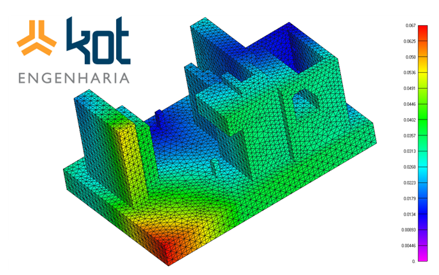
Based on the evaluation of the abovementioned data, it was concluded that the bases of the mill were dynamically adequate. This eliminated base dynamics as a possible cause for the problems observed in the concrete structure, which supports the drive pinion shaft bearings. This conclusion is particularly valid when considering the design condition – that the structure was built and assembled in compliance with all design definitions. Therefore, it became necessary to investigate the structure in ‘as-is’ condition.
Vibration measurements and structural inspection
The next step was the calculation of the vibration levels in the mill supporting structures, which the structural inspection pointed to be in a critical condition due to cracking and spalling of the concrete under the bearing’s soleplate. These bearings support the mill’s drive shaft, and the inadequate quality of the concrete (due to constructive deviations) was initially considered as one of the possible causes of excessive vibrations in the drive system.
It is worth noting that vibration is inherent to this process and its classification as “excessive” is performed based on normative prescriptions.
The normatively permissible vibration levels vary depending on the equipment class, which is defined by the power, type, size and flexibility of the supporting structures. Furthermore, the vibration limits applied are based on dynamic loads on the bearings. Thus, the speed and displacement values are classified into zones defining the operating condition of the asset:
- Zone A: Vibration characteristic of new machines;
- Zone B: Acceptable vibration levels for long-term operation;
- Zone C: Machines that vibrate in this zone are considered unsatisfactory for long-term operation and must undergo scheduled maintenance;
- Zone D: High vibration values that cause damage to equipment. Immediate maintenance must be carried out.
Next, in Figure 3 (left), an example of speed measurement in the bearings of the mill drive system is presented. On the right side, a spectrum of frequencies consisting in the description of a given variable in the frequency domain, enabling the summary of the vibration signals of different simultaneously occurring frequencies. All vibration levels were measured at standardized points, according to the applicable standards.

With these results, the vibrations obtained were compared to the admissible levels of the equipment, evaluating the compliance of the mill base in relation to current standards. The vibration modes of the bases and columns were also analyzed, seeking to identify any possible relationship with the observed non-conformities.
Finally, the treatment of the collected data concluded that the vibration levels measured in part of the bearings was above the standardized admissible values, a condition that required corrective actions. On these same supporting structures, and only on them, the visual inspection showed damage to the grouting pads, under the base plates of the bearings. This evidence made explicit the relevance of some factors. Among them, the deficient execution (construction) quality of the concrete under the base plates of the bearing connections.
Conclusion
It was possible to identify that some bearings had vibration levels below the permissible values by norm, while others were already in a state that required immediate maintenance. The visual inspection revealed damage to the concrete under the bearing bases, these distresses were attributed to the deficient construction of the concrete which, under operational loading conditions, failed. As result, the reduction in stiffness implied in an increase of vibration levels of the set. The design of anchor bolts was also pointed out as a secondary contributing factor.
This deficient condition had a preponderant amplifying effect on the higher frequencies of the spectrum, cause by mechanical misalignments of the mechanical set.
Based on these conclusions, Kot designed the recovery procedure of the pinion base. The structural recovery of the base connections and the concrete parts that supported the bearings was necessary. Reinforcements were added to ensure complete interaction between the materials that constituted the supporting structures and to control cracking in the upper part of it. As a result, the base started to present satisfactory structural performance, with vibration levels significantly reduced after recovery, no longer presenting the aforementioned problems during the operation of the equipment.
Kot has extensive experience in structural, modal and dynamic analysis, being able to assist in the most diverse challenges of your business with adequate and effective solutions. Consult our team of experts to learn more about!

KOT Engenharia’s Team
With over 29 years of history and various services provided with excellence in the international market, the company promotes the integrity of its clients’ assets and collaborates in solutions to engineering challenges. For this integrity, it uses tools for calculation, inspection, instrumentation and monitoring of structures and equipment.

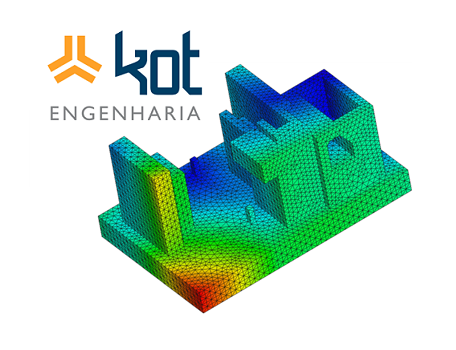
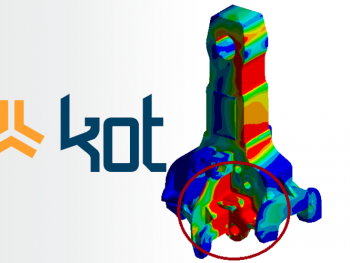
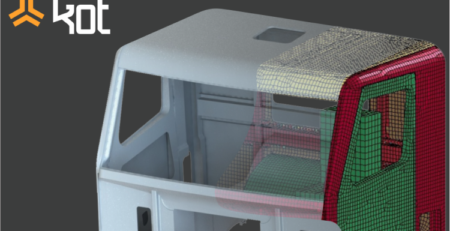

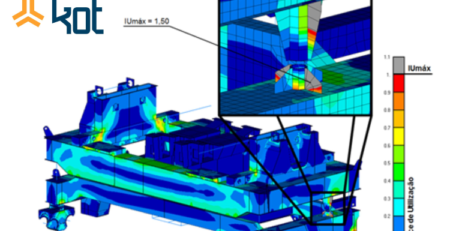
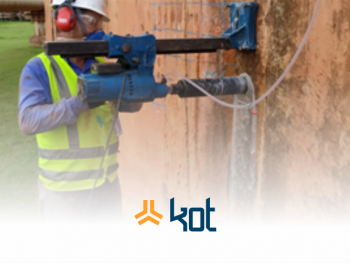
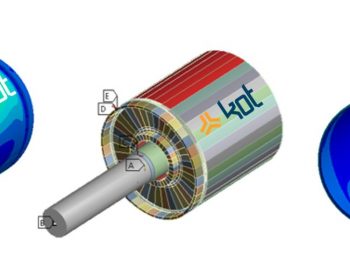
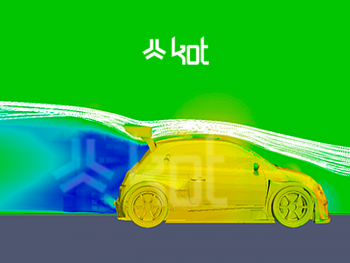


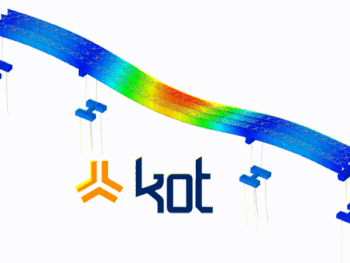
Leave a Reply